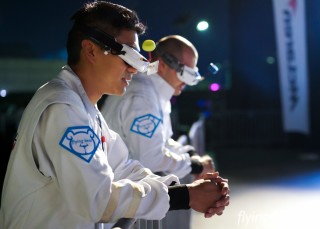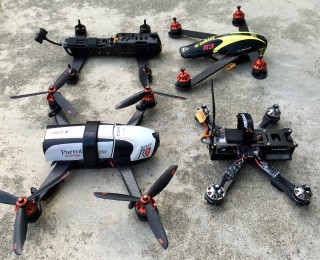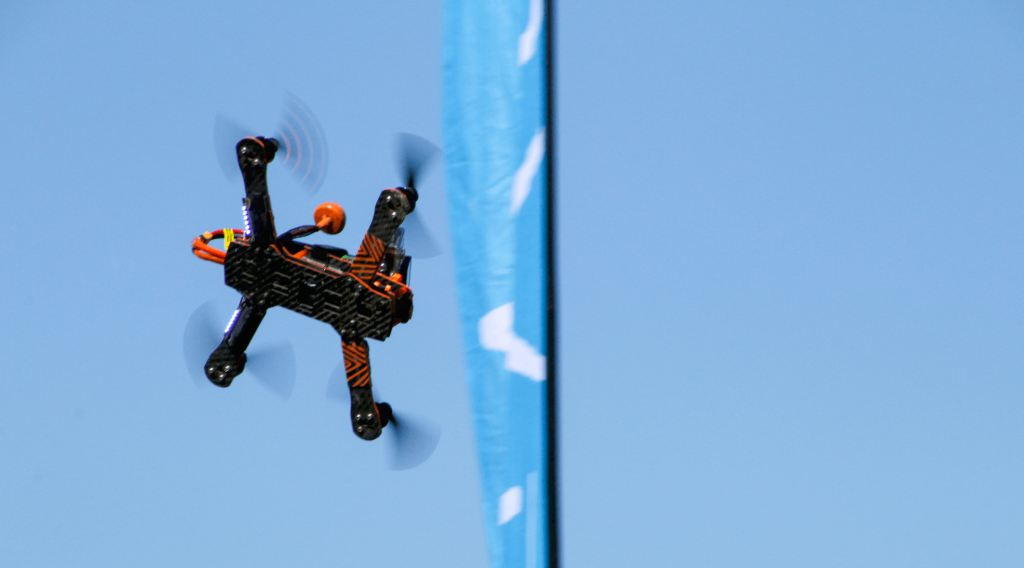Drone racing is coming to mainstream television.
The International Drone Racing Association has signed a multi-year, international media distribution deal with ESPN, Dr. Scot Refsland, chairman of the IDRA, told [a]listdaily on Wednesday.
Racing’s newest phenomenon, which features remote-controlled drones that can travel designed courses faster than 70 miles per hour, will debut on ESPN with the U.S. National Drone Racing Championships beginning August 5 in New York. Set to take place in Governors Island, it’s already shaping up to be a made-for-TV spectacle by offering views of both lower Manhattan and the Statue of Liberty. The races will be streamed live on ESPN3; following each event they’ll be televised as one-hour specials on an ESPN network.

“IDRA is focused on creating live drone racing events on a global scale that drives a sustainable drone racing eco-system,” Refsland told [a]listdaily. “With our partnership with ESPN, IDRA is moving drone racing to tens of millions of spectators globally.”
Drone racing is currently seeing an unprecedented rise in popularity and is poised to become the next behemoth racing sport alongside NASCAR and Formula 1, ESPN said in a statement announcing deal. “We look forward to providing drone racing fans a larger platform to access this exciting world,” said Matthew Volk, ESPN’s director of programming and acquisitions. “Drone racing is an opportunity to reach and connect with a growing and passionate audience.”
In recent months, drone racing has gone from a cool hobby mirroring video games on steroids to becoming a scintillating racing sport—long gone are the days of drones being a novel Christmas gift. Earlier this month, Showtime’s 60 Minutes Sports covered the rising popularity of the virtual reality experience for pilots around the world. Even Miami Dolphins owner Stephen Ross sees potential for a new sport. Last year, he invested $1 million into the space. Pilots making money off their passion is no longer a pipedream.
The Berkeley, California-based IDRA, which prides itself on groundbreaking drone technology, racecourse design and advancing safety standards, will be producing the content for ESPN.
Refsland, a trailblazer in the sport who has a Ph.D. from Japan’s Gifu University in virtual reality and is also the CEO of RotorSports, considers himself “a serial entrepreneur who loves to be at the spear tip of any new and emerging technology.”
He joined [a]listdaily to talk about what could be very well be the next sports craze. Refsland will be discussing drone racing in detail at the [a]list summit on April 20.

Drone racing is a relatively new sport—how is the landscape beginning to take shape? What’s it like being on the forefront of an entirely new sport?
Drone racing is the fastest sport and technology I’ve ever seen with an acceleration behind it that is currently unmeasurable. As an example, most sports take years to go from the backyard to major broadcast. It took drone racing eight months, and IDRA is the first company to sign a major, multi-year international distribution deal with ESPN.
What makes drone racing the next big thing?
Drone racing is the next-generation sport that takes the thrill and drama of human competition that we love about the NFL, Formula 1 and NASCAR, mixes it with eSports, and delivers it through next generation broadcast via virtual reality and augmented reality.
What is the culture of drone racing like? What are the demographics of the people going to the events?
Up to this point it’s been pretty much a bunch of nerds standing in a field racing each other. But what’s interesting is that almost everyone who puts on a pair of VR goggles and goes for a ride with a drone racer gets that immediate sensation that they’re really flying in the drone. Humans have embedded deep into their DNA the ‘dream of free flight’ and this is the first time that ‘free flying’ is accessible to just about everyone. So, while currently the sport is being driven by the early nerd and tech pioneers, mostly male 20-somethings, the IDRA’s plan is to move the sport into a highly entertaining and thrilling sport akin to any professional, large-scale extreme sporting event. And because the natural adrenalin, speed and ‘thrill of human competition’ mix is so intense with drone racing, it’s going to move the demographics quickly into a 15-to-30-year-old international audience and consumer base.
What kind of sponsorship opportunities do you envision happening in drone racing?

Drone racing is opening up several big opportunities for new, compelling interactions between fans and brands. For example, because drone racing is perfect for a multi-screen experience, persistent broadcasts are now a very typical experience where there are a minimum of 30 commercial breaks. It also moves past the ‘on-screen product placement’ model and pushes brands into a highly contextual position. For example, we’re experimenting with ‘Racing Changing Moments’ where a brand would be associated with a very compelling event that happens at some point in the race.
What is your personal vision for drone racing? Where do you see this all going?
Drone racing is not only the sport of the future, but the precursor industry that will lead and educate our next generation of professionals who will live in a brave new world that utilize autonomous vehicles, intelligent machines, and the like.
How do you apply your experience to drone racing?
Like most original VR pioneers, I’ve been carrying around suitcases of technology and concepts for about 20 years searching for that right convergence moment. The barriers to VR have been incredibly high, including lack of computing power, consumer adoption and almost no compelling content. When I bumped into drone racing in early 2014, I instantly realized that it could be the very catalyst to drive both VR and eSports together to create a highly competitive and addictive new sport. It has all the ingredients for a recipe of explosive, yet sustainable growth.
Follow Manouk Akopyan on Twitter @Manouk_Akopyan.

